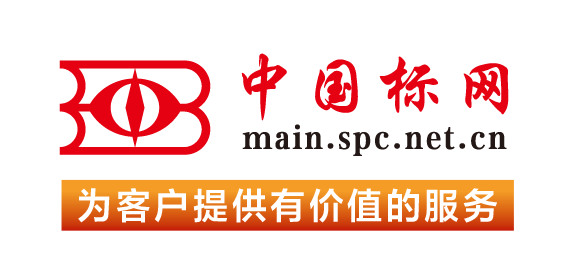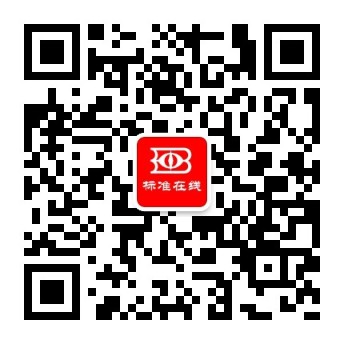- 您的位置:
- 中国标准在线服务网 >>
- 全部标准分类 >>
- 国外标准 >>
- ASTM >>
- ASTM D7742-17 Standard Practice for Determination of Nonylphenol Polyethoxylates (NPnEO, 3 ≤ n ≤ 18) and Octylphenol Polyethoxylates (OPnEO, 2 ≤ n ≤ 12) in Water by Single Reaction Monitoring (SRM) Liquid Chromatography/ Tandem Mass Spectrometry (LC/MS/MS)
【国外标准】 Standard Practice for Determination of Nonylphenol Polyethoxylates (NPnEO, 3 ≤ n ≤ 18) and Octylphenol Polyethoxylates (OPnEO, 2 ≤ n ≤ 12) in Water by Single Reaction Monitoring (SRM) Liquid Chromatography/ Tandem Mass Spectrometry (LC/MS/MS)
本网站 发布时间:
2024-02-28
开通会员免费在线看70000余条国内标准,赠送文本下载次数,单本最低仅合13.3元!还可享标准出版进度查询、定制跟踪推送、标准查新等超多特权!
查看详情>>
适用范围:
5.1 This practice has been developed in support of the U.S. EPA Office of Water, Office of Science and Technology by the Chicago Regional Laboratory (CRL).5.2 Nonylphenol (NP) and Octylphenol (OP) have been shown to have toxic effects in aquatic organisms. The prominent source of NP and OP is from common commercial surfactants which are longer chain APEOs. The most widely used surfactant is nonylphenol polyethoxylate (NPnEO) which has an average ethoxylate chain length of nine. The APEOs are readily biodegraded to form NP1EO, NP2EO, nonylphenol carboxylate (NPEC) and NP. NP will also biodegrade, but may be released into environmental waters directly at trace levels. This practice screens for the longer chain APEOs which may enter the STP at elevated levels and may cause a STP to violate its permitted discharge concentration of nonylphenol.1.1 This practice covers the determination of nonylphenol polyethoxylates (NPnEO, 3 ≤ n ≤ 18) and octylphenol polyethoxylates (OPnEO, 2 ≤ n ≤ 12) in water by Single Reaction Monitoring (SRM) Liquid Chromatography/ Tandem Mass Spectrometry (LC/MS/MS) using direct injection liquid chromatography (LC) and detected with tandem mass spectrometry (MS/MS) detection. This is a screening practice with qualified quantitative data to check for the presence of longer chain ethoxylates in a water sample.1.1.1 All data are qualified because neat standards of each alkylphenol ethoxylate (APEO) are not available and the synthesis and characterization of these neat standards would be very expensive. The Igepal2 brand standards, which contain a mixture of various chain lengths of the alkylphenol ethoxylates (APEOs), were used. The mixture was characterized in-house assuming the instrument response at an optimum electrospray ionization cone and collision voltage for each APEO was the same. This assumption, which may not be accurate, is used to determine qualified amounts of each ethoxylate in the standards. The n-Nonylphenol diethoxylate (n-NP2EO) surrogate was available as a neat characterized standard, therefore, this concentration and recovery data was not estimated. APEOs are not regulated by the EPA, but nonylphenol, a breakdown product of NPnEOs, is regulated for fresh and saltwater dischargers. A request by a sewage treatment plant (STP) was made to make this practice available through ASTM in order to screen for the influent or effluent from sources of APEOs coming into the STP. The interest lies in stopping the source of the longer chain APEOs from entering the STP in order to meet effluent guidelines. Based upon the above, this is a practice rather than a test method. A comparison between samples is possible using this practice to determine which has a higher concentration of APEOs.1.2 Units—The values stated in SI units are to be regarded as standard. No other units of measurement are included in this practice.1.3 The estimated screening range shown in Table 1 was calculated from the concentration of the Level 1 and 7 calibration standards shown in Table 4. These numbers are qualified, as explained in Section 1, and must be reported as such. Figs. 1-5 show the SRM chromatograms of each analyte at the Level 1 concentration with the signal to noise (S/N) ratio. This is a screening practice and method detection limits are not given. The S/N ratio for each analyte at the Level 1 concentration must be at least 5:1 for adequate sensitivity. If the instrument can not meet the criteria, the screening limit must be raised to an acceptable level.FIG. 1 SRM Chromatograms NP3EO-NP8EOFIG. 2 SRM Chromatograms NP9EO-NP14EOFIG. 3 SRM Chromatograms NP15EO-NP18EO and n-NP2EOFIG. 4 SRM Chromatograms OP2EO-OP7EOFIG. 5 SRM Chromatograms OP8EO-OP12EO1.4 This standard does not purport to address all of the safety concerns, if any, associated with its use. It is the responsibility of the user of this standard to establish appropriate safety, health, and environmental practices and determine the applicability of regulatory limitations prior to use.1.5 This international standard was developed in accordance with internationally recognized principles on standardization established in the Decision on Principles for the Development of International Standards, Guides and Recommendations issued by the World Trade Organization Technical Barriers to Trade (TBT) Committee.
标准号:
ASTM D7742-17
标准名称:
Standard Practice for Determination of Nonylphenol Polyethoxylates (NPnEO, 3 ≤ n ≤ 18) and Octylphenol Polyethoxylates (OPnEO, 2 ≤ n ≤ 12) in Water by Single Reaction Monitoring (SRM) Liquid Chromatography/ Tandem Mass Spectrometry (LC/MS/MS)
英文名称:
Standard Practice for Determination of Nonylphenol Polyethoxylates (NPnEO, 3 ≤ n ≤ 18) and Octylphenol Polyethoxylates (OPnEO, 2 ≤ n ≤ 12) in Water by Single Reaction Monitoring (SRM) Liquid Chromatography/ Tandem Mass Spectrometry (LC/MS/MS)标准状态:
Active-
发布日期:
-
实施日期:
出版语种:
- 其它标准
- 上一篇: ASTM D7731-17 Standard Test Method for Determination of Dipropylene Glycol Monobutyl Ether and Ethylene Glycol Monobutyl Ether in Sea Water by Liquid Chromatography/Tandem Mass Spectrometry (LC/MS/MS)
- 下一篇: ASTM D7776-12 Standard Guide for Self-Assessment of Quality System Practices in Petroleum Products and Lubricant Testing Laboratories (Withdrawn 2017)
- 推荐标准
- ASTM 51401-21 Standard Practice for Use of a Dichromate Dosimetry System
- ASTM 51956-21 Standard Practice for Use of a Thermoluminescence-Dosimetry System (TLD System) for Radiation Processing
- ASTM A1010/A1010M-24 Standard Specification for Higher-Strength Martensitic Stainless Steel Plate, Sheet, and Strip
- ASTM A1016/A1016M-24 Standard Specification for General Requirements for Ferritic Alloy Steel, Austenitic Alloy Steel, and Stainless Steel Tubes
- ASTM A105/A105M-24 Standard Specification for Carbon Steel Forgings for Piping Applications
- ASTM A1064/A1064M-24 Standard Specification for Carbon-Steel Wire and Welded Wire Reinforcement, Plain and Deformed, for Concrete
- ASTM A108-24 Standard Specification for Steel Bar, Carbon and Alloy, Cold-Finished
- ASTM A1080/A1080M-24 Standard Practice for Hot Isostatic Pressing of Steel, Stainless Steel, and Related Alloy Castings
- ASTM A1090/A1090M-19(2024) Standard Specification for Forged Rings and Hollows for Use as Base Plates in Power Transmission Structures
- ASTM A1115/A1115M-24 Standard Practice for Construction of Mechanically Stabilized Earth Walls with Inextensible Soil Reinforcement
- ASTM A1128-24 Standard Specification for Stainless Steel Shielded, Rubber Gasketed Couplings Having an Integral Restraint Feature for Joining Hubless Cast Iron Soil Pipes and Fittings Where External Restraint Is Required
- ASTM A179/A179M-24 Standard Specification for Seamless Cold-Drawn Low-Carbon Steel Heat-Exchanger and Condenser Tubes
- ASTM A234/A234M-24 Standard Specification for Piping Fittings of Wrought Carbon Steel and Alloy Steel for Moderate and High Temperature Service
- ASTM A242/A242M-24 Standard Specification for High-Strength Low-Alloy Structural Steel
- ASTM A249/A249M-24a Standard Specification for Welded Austenitic Steel Boiler, Superheater, Heat-Exchanger, and Condenser Tubes
 我的标准
我的标准 购物车
购物车 400-168-0010
400-168-0010














